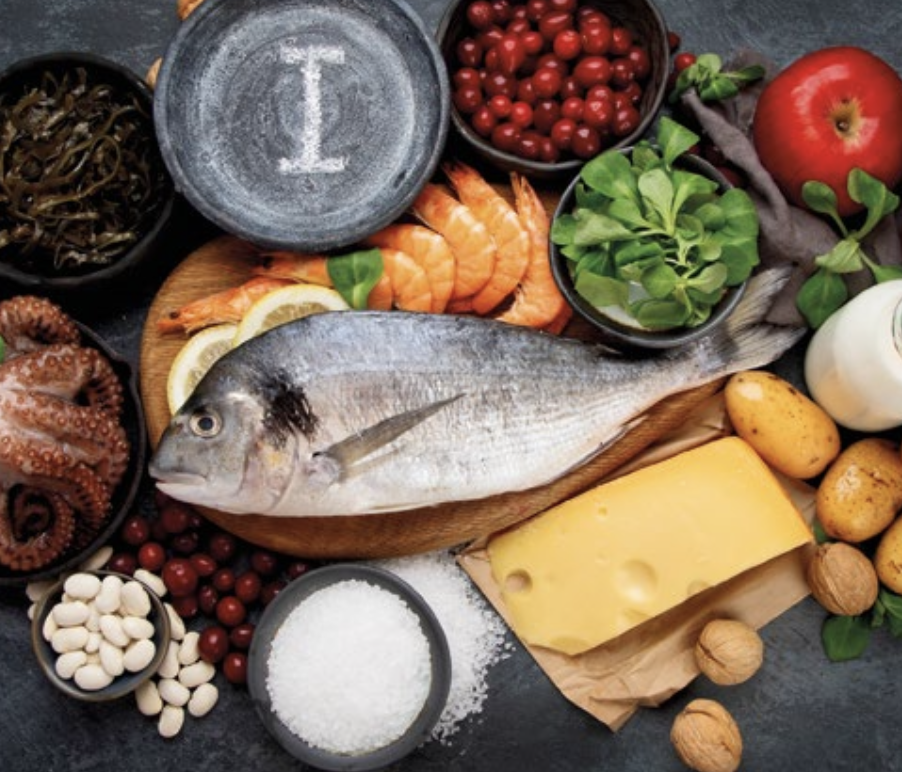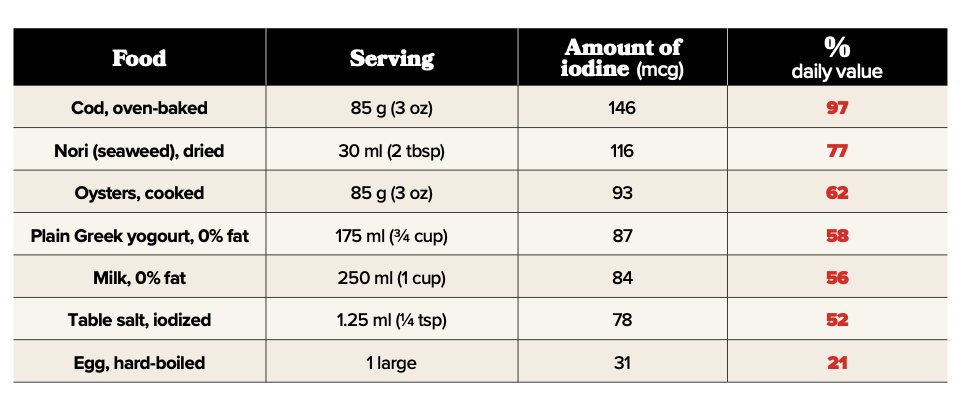By Isabelle Huot
While it’s naturally present in several foods, iodine is added to table salt because the human body really needs it
The mineral iodine is necessary for the production of thyroid hormones, which affect the metabolism, skin, hair, mental function, and more. A thyroid gland that functions well is essential for good health.
The amount of iodine in the crops we eat depends on the iodine content in the soil. Some parts of the world have soil that is low in iodine, which makes iodine deficiency more likely in the people who live there. When a person doesn’t get enough iodine, the body doesn’t produce enough thyroid hormones, and that can cause a goitre—an enlargement of the thyroid gland—to form. Other symptoms can include swollen or dry and scaly skin, hoarseness, reduced mental function, thinning and coarse hair, lack of resistance to cold, and even weight gain.
Added Iodine
To reduce the risk for iodine deficiency in their populations, some countries developed salt-iodization programs. In Canada, adding iodine to table salt (as potassium iodide) has been mandatory since 1949 because much of the soil here is low in iodine.
In general, iodine deficiency is rare in areas where salt is iodized. According to the results of the Canadian Health Measure Survey, a moderate deficiency in urinary iodine was found in seven per cent of the population from 2009 to 2011. And in 2022, a study conducted at McMaster University in Hamilton, Ont., found a moderate to severe deficiency in 11.9 per cent of the 800 Canadians screened.
In Prepared Foods
Salt added to prepared foods doesn’t have to be iodized. In fact, according to the Canadian Food Inspection Agency, non-iodized salt and sea salt can be used as food ingredients.
Also, Canada’s Food and Drug Regulations states that when salt is used as an ingredient in food, its components (such as iodide) don’t need to be indicated in the list of ingredients. It’s therefore difficult for consumers to know if salt added to a food is iodized or not. Cooking at home with foods that are rich in iodine or with a little iodized salt is therefore a good way to add iodine to the menu.
A Daily Need
Adults require 150 micrograms (mcg) of iodine per day—more for pregnant women (220 mcg) and those who are breastfeeding (290 mcg). To meet their needs, adults need to consume just 2.5 millilitres (½ teaspoon) of iodized salt per day. Besides iodized salt, seaweed (e.g., nori, kombu, wakame), fish, seafood, eggs, and dairy products such as milk and yogourt are good food sources of iodine. (See table.)
Good to Know
Oral iodine supplements or medication (such as levothyroxine, a synthetic form of thyroxin—a thyroid hormone) can be prescribed to treat people who have an iodine deficiency.







